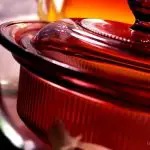Using Mason Jars to Freeze Food (Ideal Freezer Container?)
Using plastic to freeze foods and liquids is becoming increasingly unpopular due to the harmful effects on the environment. Mason jars are everyday household items and more eco-friendly than plastic, but can you freeze in mason jars?
You can freeze in mason jars. It’s best to go with mason jars made of tempered glass because they can withstand freezing temperatures. Additionally, you should always leave a small gap in the jar, as filling it right to the top could cause it to crack due to liquid expansion.
Finding eco-friendly ways to freeze foods and liquids is essential, and mason jars are one of the best options. To learn more about freezing in mason jars, be sure to keep reading.
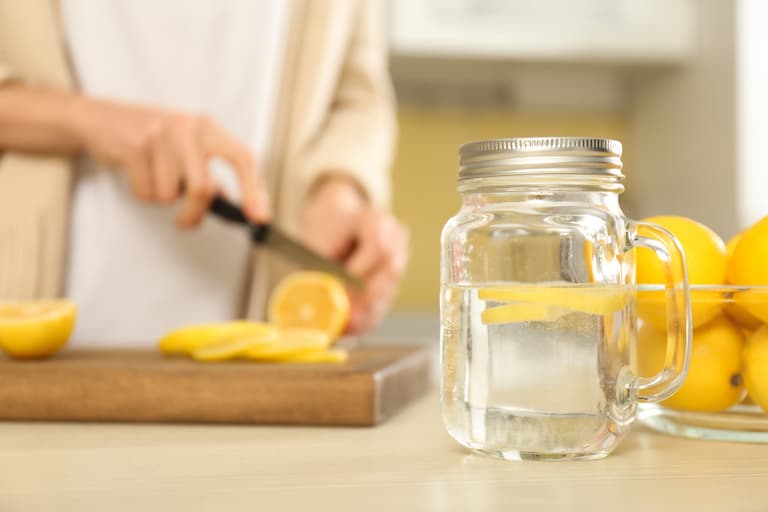
What Can You Freeze In Mason Jars?
You can freeze many things in mason jars, including soups, beans, peas, sauces, and leftovers. However, they’re most commonly used to freeze liquids because of their jar shape and solid form.
Although there are many things you can freeze in an air-tight mason jar, the process is almost the same for everything. Now, let’s take a closer look at the best way to freeze any type of solid or liquid.
Freezing Solid Food in Mason Jars
Freezing solid food in a mason jar is quick and straightforward. So you’ll need to find a mason jar that’s the best size for what you’re freezing.
For example, a jar from this 6-pack of Paksh Novelty Store Mason Jars (on Amazon.com) would be perfect for freezing many types of food, including beans and carrots. These mason jars have wide openings, so filling them up is easy.
Once you’ve chosen a mason jar, all you need to do is place the food in it. Make sure the food is completely cool before freezing it. If you put warm food in the freezer, it can raise the temperature of the rest of the food. This can ultimately cause bacterial growth and food contamination.
Finally, you can place your mason jar straight in the freezer as long as the food isn’t hot.
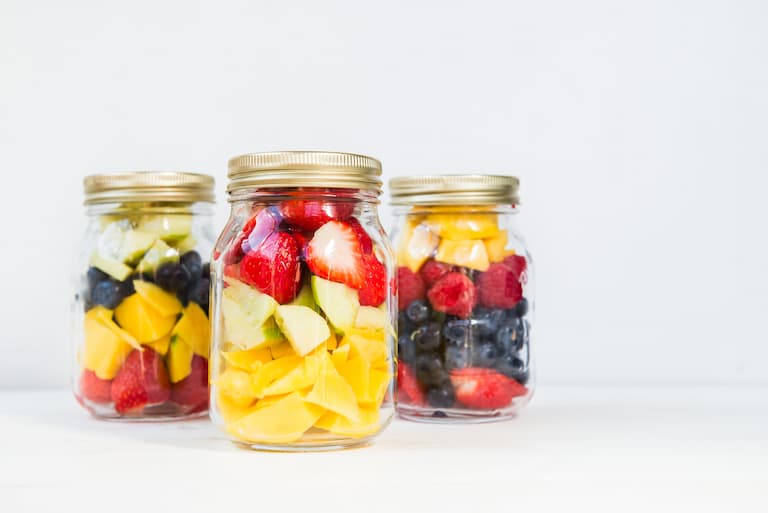
Freezing Liquids in Mason Jars
Mason jars are also an excellent choice for freezing liquids because they’re easy to pour. Most mason jars have wide openings, making it an easy and mess-free experience overall.
Once you’ve chosen the mason jar you want to use, you can pour your liquid into it. One of the most important things to remember when freezing liquids in mason jars is to leave some space at the top because most liquids expand when they freeze.
If you fill your mason jar with soup and don’t leave any gaps, it will likely expand and cause the jar to crack. Leave at least an inch (2.54 cm) of a gap between the liquid and lid.
You want to make sure your liquid is completely cool before freezing, like with solid food. Otherwise, you risk contaminating the other food in the freezer.
Tip: If you’re worried about the liquid expanding too much, you can keep the lid off initially. Then, after the first 24 hours, you can check the jar and place the lid on. This ensures your liquid won’t damage the lid of the jar.
Defrosting Food in a Mason Jar
When you’re ready to remove your food from the freezer, it’s good to know how to defrost it effectively. Since it will be completely solid, it won’t be possible to remove it from the mason jar right away.
Instead, you’ll need to let the food defrost for a while. There are numerous ways to do this, so let’s look at some of them below.
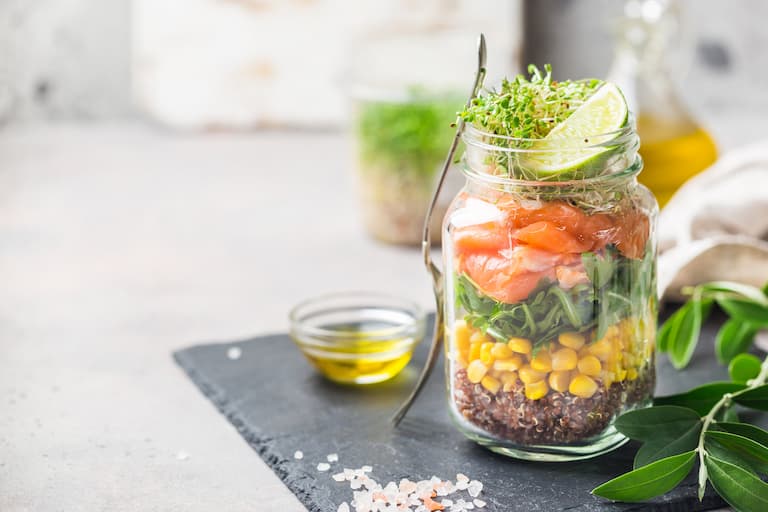
Leave the Mason Jar on the Counter to Defrost
One way you can defrost food in a mason jar is to leave it on the counter. However, the US Department of Agriculture does not recommend this method because bacteria can multiply at room temperature.
Leaving your frozen mason jar food on the counter may be quicker than defrosting in the fridge, but it’s usually not worth the risk, especially if you’re dealing with perishable foods.
Defrost Your Frozen Mason Jar in the Fridge
You can place your mason jar in the fridge overnight, which will allow the food to defrost at a safe temperature. This is one of the best methods, and you should do it like this if you have the time.
Once the food begins to thaw, you may be able to remove some of it from the jar.
Thaw a Mason Jar With a Cold Water Bath
Why not use hot water instead of cold? Wouldn’t hot water defrost food much quicker? And the answer to that is yes. However, it’s highly unsafe to defrost food using hot water because it subjects the outer layer of food to high temperatures while the center of the food stays frozen.
This creates a breeding ground for bacteria. In fact, a hot water bath is even more dangerous than defrosting on the counter. So you should certainly avoid doing it.
Although a cold water bath will take longer than a hot water bath, it’s much safer. To do this, you’ll need to place the mason jar in cold water and replace the cold water continually to ensure it remains cold.
Once the food is thawed, you should be able to remove it from the mason jar safely.
Use the Microwave to Thaw Food or Liquid in a Mason Jar
It’s perfectly safe to place a mason jar in the microwave, and if you’re in a hurry, defrosting your food in the microwave is probably the best option. It’s relatively safe and quick, but the exact time it takes depends on the food.
Most microwaves have a defrost setting, so you should use that if you can. Using high temperatures may slightly cook the food, which you want to avoid.
Since defrosting your frozen food in the microwave can make it warm, you should cook it immediately after defrosting. This will prevent the opportunity for bacteria to multiply in the food.
Mason Jars Keep Food for Longer
As you now know, mason jars are excellent for freezing many foods and liquids. But they’re also suitable for storing food in a pantry or other room temperature area. Since most mason jars have airtight lids, you don’t have to worry about any air or contaminants ruining your food too quickly.
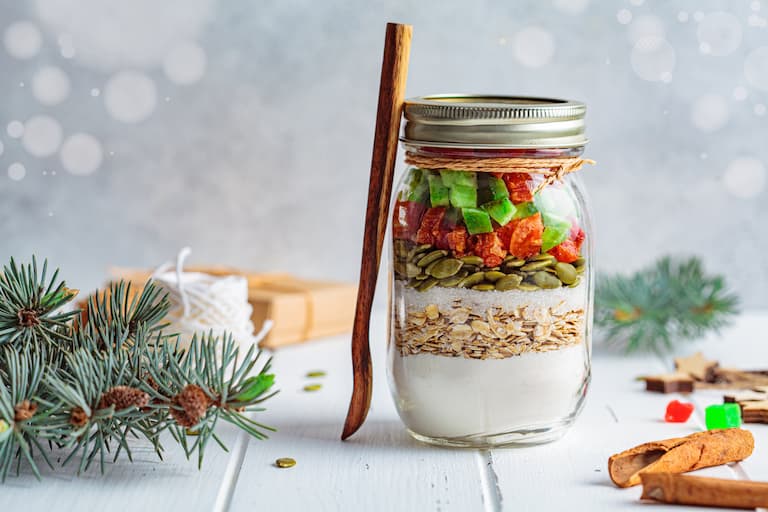
Food can keep for a few weeks longer if you keep it in an airtight container like a mason jar, so it’s definitely worth using one if you want to give some of your food longer shelf life.
As well as keeping food for longer, mason jars also don’t absorb smells because the glass is non-porous. So if you use a mason jar to freeze food with a strong odor, such as cheese, the scent can easily wash away.
And on top of that, mason jars are generally free from any harmful chemicals, unlike plastic freezer containers. So freezing in mason jars is safe and doesn’t allow any chemicals to get onto or into your food.
Other Glass Containers Are Also Good for Freezing
Mason jars are handy for freezing, but other glass containers are available as well. It may be good to have a mixture of mason jars and other glass containers for storing food in the freezer.
An example of a different glass container is the Rubbermaid Brilliance Glass Container, available on Amazon. This one is perfect for freezing food as it has plenty of space and comes with an airtight lid.
As long as the glass container you choose is made of tempered glass, you won’t have a problem freezing it.
Can You Freeze In Jam Jars From the Store?
You can’t freeze in jam jars from the store. These are the jars on the shelf that have jam inside them, like Smucker’s jam. Since these jars are usually made from fragile glass, they may break or crack easily if frozen.
It’s always best to go with freezer-safe glass. Although you shouldn’t freeze the jam jars from the store, you can keep them for regular room temperature storage once they’re empty and washed.
Stainless Steel Is Also Good for Freezing
If you’re looking for something besides mason jars or glass containers, you may want to consider stainless steel containers.
Like mason jars, stainless steel containers are much more eco-friendly than plastic and don’t contain harmful chemicals. They are also non-porous, so you can easily wash smells and stains off them.
Examples of freezer-safe stainless steel containers are the ones from the Mizeer Store Bento Lunch Box Set on Amazon. They come in different sizes, so you can use them to freeze many different foods.
While you shouldn’t solely use stainless steel containers for freezing, it’s good to have a combination of containers. For example, having a mix of stainless steel containers and mason jars is an excellent idea. It’s always good to have options.
How Long Can Mason Jars Stay Frozen?
Mason jars can stay frozen indefinitely, so you don’t have to worry about freezer damage. However, most foods shouldn’t be frozen for more than a few months because they will lose their original taste and texture.
So if you’re freezing food in a mason jar, it’s best to defrost it after a few months to retain as much flavor and texture as possible.
There are only two main reasons a mason jar may get damaged in the freezer:
- If it’s made from weak glass, which most aren’t.
- If it was too full and the liquid expanded, causing the glass to crack.
As long as your mason jar is made of durable glass and you don’t overfill it, it shouldn’t get damaged in the freezer.
Conclusion
It is perfectly safe to freeze in mason jars. They are environmentally friendly, easy to clean, and have large openings for easy pouring.
Although mason jars are commonly used to freeze liquids, you can also use them to freeze solid food. When freezing liquid, always make sure you leave a gap of at least one inch (2.54 cm). This will ensure your jar remains intact and crack-free.

